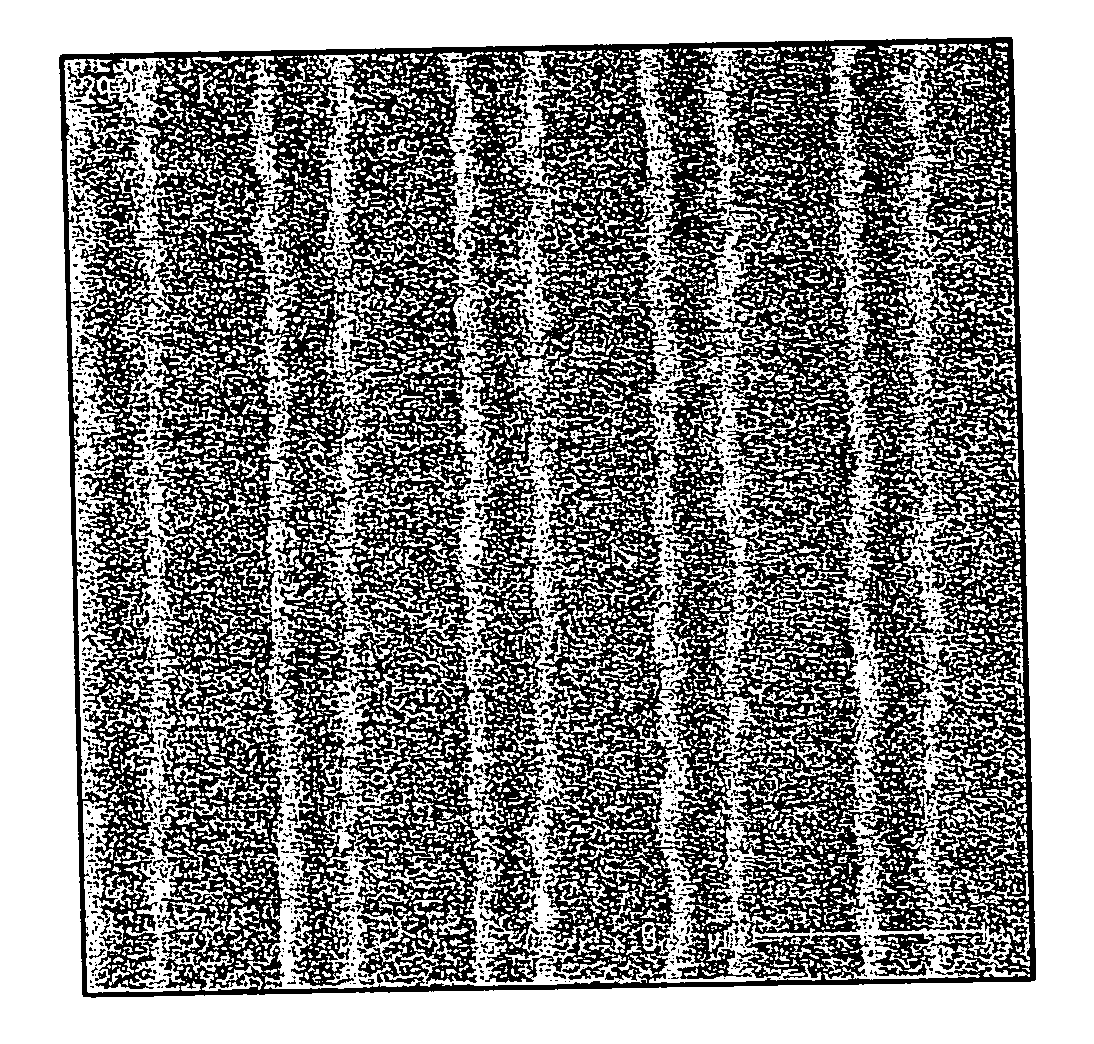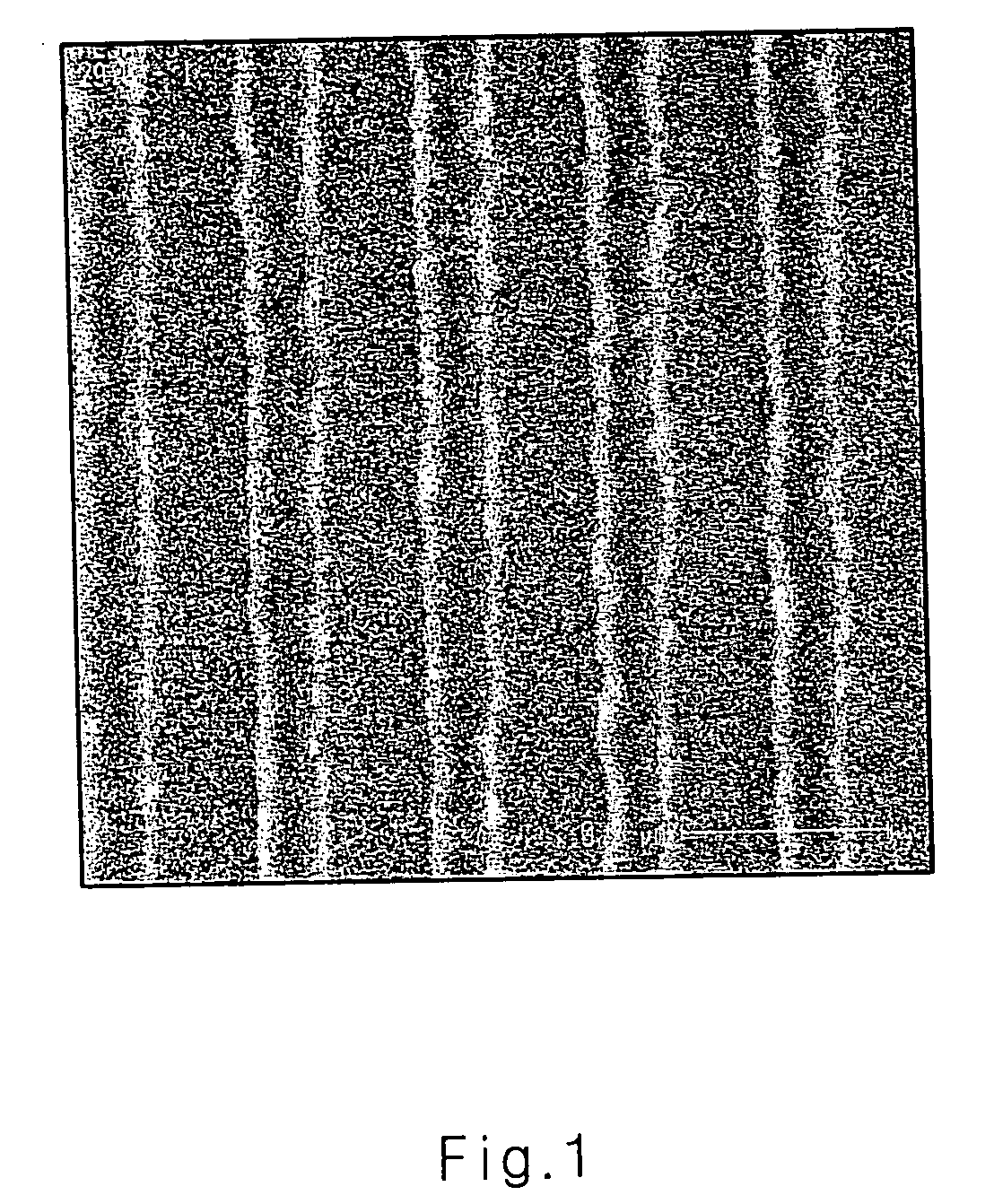Photoresist polymer and photoresist composition containing the same
a technology of photoresist polymer and composition, applied in the field of photoresist polymer and photoresist composition, can solve the problems of difficult to improve the ler of the pattern, improper use at 157 nm wavelength, and more severe ler when using arf photoresist materials, etc., to achieve excellent transmittance, low light absorption, and thermal resistance and adhesive properties. good
- Summary
- Abstract
- Description
- Claims
- Application Information
AI Technical Summary
Benefits of technology
Problems solved by technology
Method used
Image
Examples
example 1
Synthesis of Compound of Formula 1b
[0107] 0.1M of 2,3,3-trimethyl-1,3-propane sultone was dissolved in tetrahydrofuran anhydride under a nitrogen atmosphere, and 0.1M of NaH was added thereto. The prepared solution was stirred for 10 minutes, and then 0.11M of vinyl bromide was added thereto. The obtained mixture was further reacted at room temperature for 3 hours. After the reaction was completed, the reacted mixture was filtered to remove NaBr. Then, by precipitation of the resulting material in a diethylether / pentane mixed solution, the compound of Formula 1b was obtained (yield: 92%).
example 2
Synthesis of Compound of Formula1c
[0108] The same procedure of Example 1 was performed using 2,2,3,3-tetramethyl-1,3-propane sultone instead of 2,3,3-trimethyl-1,3-propane sultone, and obtained the compound of Formula1c (yield: 96%).
example 3
Synthesis of Compound of Formula 1e
[0109] The same procedure of Example 1 was performed using 1,2,3,3-tetramethyl-1,3-propane sultone instead of 2,3,3-trimethyl-1,3-propane sultone, and obtained the compound of Formula 1e (yield: 92%).
PUM
| Property | Measurement | Unit |
|---|---|---|
| roughness | aaaaa | aaaaa |
| roughness | aaaaa | aaaaa |
| wavelengths | aaaaa | aaaaa |
Abstract
Description
Claims
Application Information
 Login to View More
Login to View More - R&D
- Intellectual Property
- Life Sciences
- Materials
- Tech Scout
- Unparalleled Data Quality
- Higher Quality Content
- 60% Fewer Hallucinations
Browse by: Latest US Patents, China's latest patents, Technical Efficacy Thesaurus, Application Domain, Technology Topic, Popular Technical Reports.
© 2025 PatSnap. All rights reserved.Legal|Privacy policy|Modern Slavery Act Transparency Statement|Sitemap|About US| Contact US: help@patsnap.com



